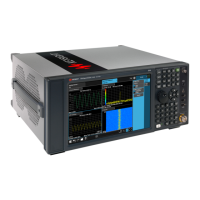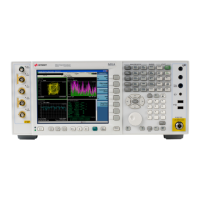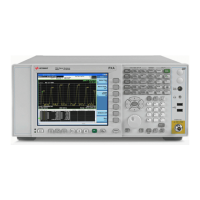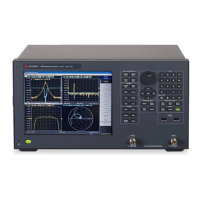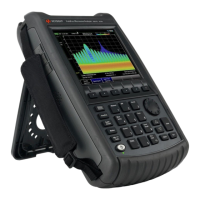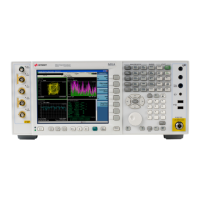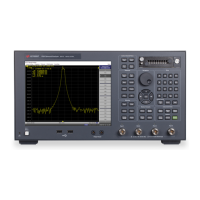3 Features and Functions
90 Keysight 34420A User’s Guide
Null (Relative) Operation
When making null measurements, also called relative, each reading is the
difference between the input signal and a stored null value. You could, for
example, make a more accurate two-wire ohms measurement by shorting the test
leads and pressing to remove the test lead resistance. See also “To Make
Null (Relative) Measurements” on page 56.
Reading = measurement – null value
– The null value is adjustable and you can set it to any value between 0 and ±
120% of the highest range, for the present function.
– The null value is stored in volatile memory; the value is cleared when power
has been off or after a remote interface reset.
– Each function and channel has an independent null value. For voltage
measurements, each input channel has an independent null. Temperature
measurement null is applied to all temperature measurements (if you change
the probe type, null is still enabled and applied). The null for resistance
measurements applies to both 2-wire and 4-wire measurements.
– The null value is stored in the meter’s Null Register. There are two ways you
can specify the null value. First, you can enter a specific number into the
register from the front-panel menu or from the remote interface. Any previously
stored value is replaced with the new value. If you are operating the meter from
the front panel, entering a null value also turns on the null function.
The second way to enter the null value is to let the meter store the first reading
in the register. Press the key to make the displayed measurement the null
value and enable the Null operation. After you enable null, the first reading
displayed will be zero. If you entered a number into the register, as described
in the paragraph above, the first reading does not overwrite the stored value.
– Since an independent null value is stored for each input channel, difference or
ratio functions also use these null values. Additionally, when using the
difference function, an additional difference null can be applied (the difference
null is only available from the front panel). See page 79 for a description of
how null is applied to difference and ratio functions.

